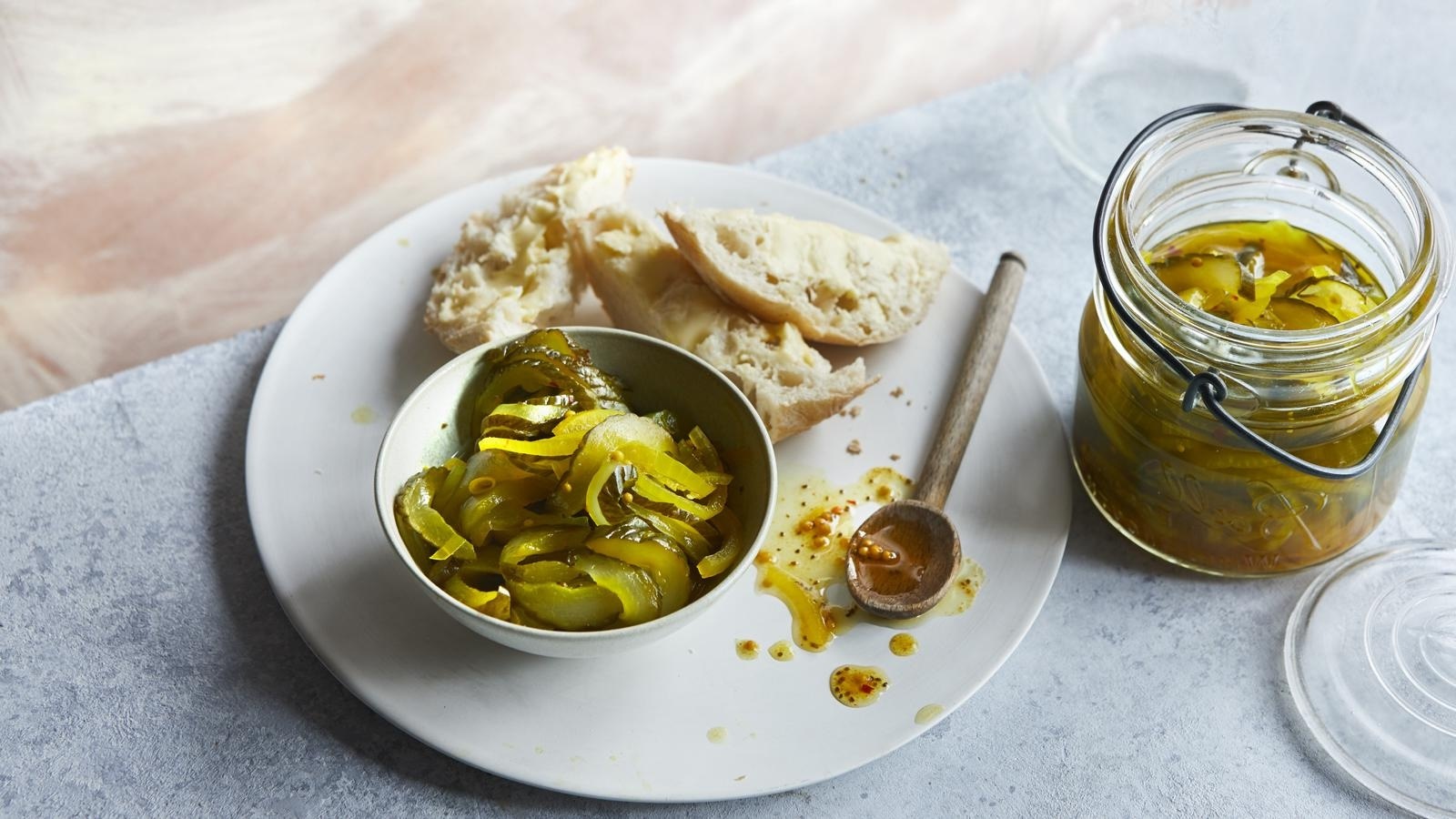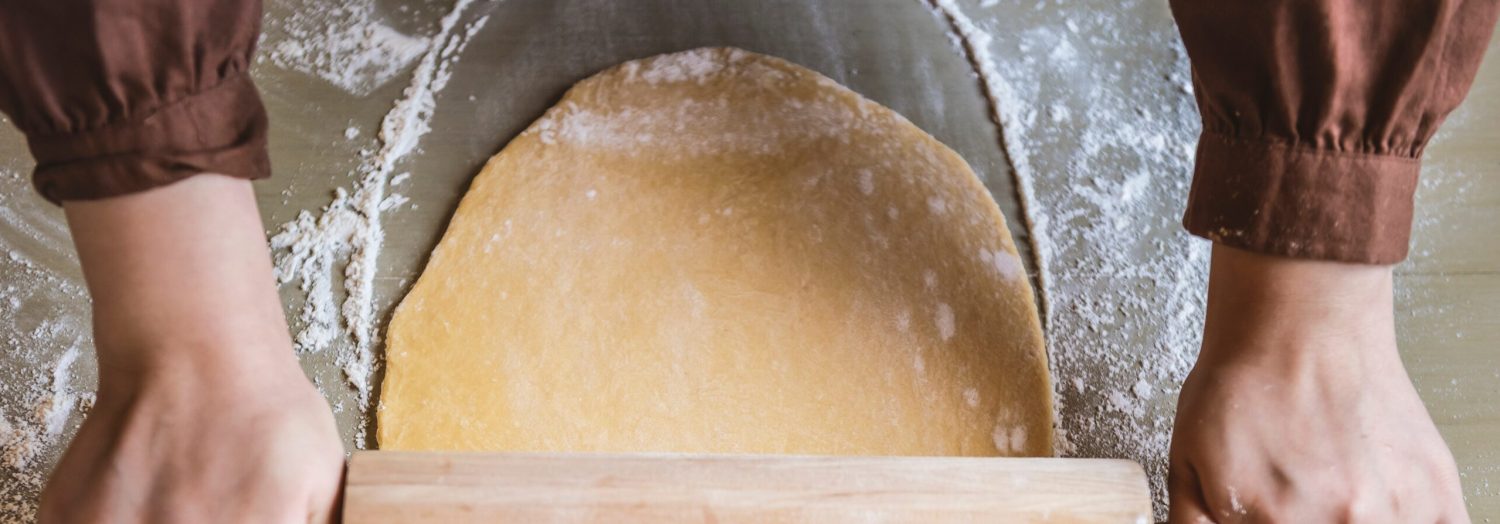Bread and butter pickles are a delightful addition to any meal, offering a perfect balance of sweet and tangy flavors. These pickles are incredibly easy to make at home and are a great way to preserve the fresh taste of summer cucumbers. Whether you're adding them to sandwiches, burgers, or enjoying them straight from the jar, these pickles are sure to become a household favorite.
While most of the ingredients for bread and butter pickles are common pantry staples, a few might not be as familiar. Mustard seeds and celery seeds are often found in the spice aisle of your supermarket. Turmeric is a vibrant yellow spice that adds color and a subtle earthy flavor to the pickles. Make sure to check the spice section for these ingredients if you don't already have them at home.

Ingredients For Bread And Butter Pickles Recipe
Cucumbers: Fresh cucumbers are the main ingredient, providing the crunchy texture and fresh flavor.
Onions: Thinly sliced onions add a sweet and slightly pungent taste that complements the cucumbers.
White vinegar: This provides the necessary acidity to pickle the cucumbers and onions.
Sugar: Adds sweetness to balance the tanginess of the vinegar.
Mustard seeds: These small seeds add a subtle, tangy flavor and a bit of texture.
Celery seeds: These seeds contribute a slight bitterness and a hint of celery flavor.
Turmeric: This spice gives the pickles their characteristic yellow color and a mild earthy flavor.
Technique Tip for Making Pickles
When slicing the cucumbers and onions, aim for uniform thickness to ensure even pickling. A mandoline slicer can be particularly useful for achieving consistent slices, which helps the vegetables absorb the vinegar mixture evenly.
Suggested Side Dishes
Alternative Ingredients
cucumbers - Substitute with zucchini: Zucchini has a similar texture and can absorb the pickling brine well, making it a good alternative.
onions - Substitute with shallots: Shallots have a milder flavor and can add a subtle sweetness, similar to onions.
white vinegar - Substitute with apple cider vinegar: Apple cider vinegar has a slightly sweeter and fruitier taste, which can complement the pickles well.
sugar - Substitute with honey: Honey can provide a natural sweetness and a slightly different flavor profile, making it a good alternative to sugar.
mustard seeds - Substitute with dill seeds: Dill seeds can add a different but complementary flavor to the pickles, providing a unique twist.
celery seeds - Substitute with caraway seeds: Caraway seeds have a similar earthy flavor and can be used as a substitute for celery seeds.
turmeric - Substitute with saffron: Saffron can provide a similar color and a unique flavor, though it is more expensive and should be used sparingly.
Alternative Recipes Similar to This One
How to Store or Freeze This Recipe
- Ensure your jars are sterilized before use. This can be done by boiling them in water for about 10 minutes. Clean jars help in preserving the pickles longer and prevent any unwanted bacteria from spoiling your vegetables.
- Once the pickles have cooled to room temperature, transfer them into the sterilized jars. Make sure the vinegar mixture covers the cucumbers and onions completely to ensure even pickling.
- Seal the jars tightly with lids. If you’re using jars with metal lids, ensure the rubber seal is intact to prevent air from entering.
- Store the jars in the refrigerator. The pickles need to be refrigerated for at least 24 hours before serving to allow the flavors to meld together. For the best taste, let them sit for about a week.
- For longer storage, you can process the jars in a boiling water bath for about 10 minutes. This step is optional but helps in extending the shelf life of your pickles.
- If you wish to freeze the pickles, ensure they are in freezer-safe containers. Leave some space at the top of the container as the liquid will expand when frozen.
- Label each jar with the date of preparation. This helps in keeping track of their freshness and ensures you consume them within a safe period.
- When ready to use, thaw frozen pickles in the refrigerator overnight. Avoid thawing at room temperature to maintain their crispness and flavor.
- Always use a clean utensil to scoop out the pickles from the jar to avoid contamination. This helps in preserving the remaining pickles for a longer period.
- Enjoy your bread and butter pickles as a delightful addition to sandwiches, burgers, or as a tangy snack on their own!
How to Reheat Leftovers
To reheat your bread and butter pickles, start by removing them from the refrigerator and allowing them to come to room temperature. This helps to ensure even heating.
If you prefer a warm pickle, place the desired amount in a microwave-safe dish. Cover the dish with a microwave-safe lid or plastic wrap, leaving a small vent for steam to escape. Microwave on medium power for 30-second intervals, stirring gently between each interval until they reach your preferred temperature.
Alternatively, you can reheat them on the stovetop. Pour the pickles and some of their brine into a small saucepan. Heat over low to medium heat, stirring occasionally, until they are warmed through. Be careful not to overheat, as this can cause the cucumbers to become too soft.
For a more gourmet touch, consider using a double boiler. Place the pickles in the top part of the double boiler and gently heat over simmering water. This method ensures a gentle, even heat that preserves the texture of the onions and cucumbers.
If you want to add a bit of crunch back to your pickles, you can briefly sauté them in a hot skillet with a small amount of olive oil. This method will give them a slightly caramelized edge while keeping the interior warm and flavorful.
Remember, reheating pickles is all about gentle warming. Overheating can lead to a loss of that delightful crunch and vibrant flavor that makes bread and butter pickles so special.
Best Tools for Making Pickles
Large bowl: To combine the cucumbers and onions, ensuring they are well mixed.
Saucepan: To heat and mix the vinegar, sugar, mustard seeds, celery seeds, and turmeric.
Measuring cups: To accurately measure the cucumbers, onions, vinegar, and sugar.
Measuring spoons: To measure the mustard seeds, celery seeds, and turmeric precisely.
Knife: To slice the cucumbers and onions thinly.
Cutting board: To provide a stable surface for slicing the cucumbers and onions.
Stirring spoon: To mix the vinegar mixture in the saucepan.
Jars: To store the pickles once they have cooled and to refrigerate them.
Ladle: To pour the hot vinegar mixture over the cucumbers and onions evenly.
How to Save Time on Making Pickles
Slice uniformly: Use a mandoline slicer to quickly and evenly slice the cucumbers and onions.
Pre-measure ingredients: Measure out the vinegar, sugar, mustard seeds, celery seeds, and turmeric before starting to save time during cooking.
Boil efficiently: Use a wide saucepan to bring the vinegar mixture to a boil faster.
Cool quickly: Place the bowl of pickles in an ice bath to speed up the cooling process before transferring to jars.

Bread and Butter Pickles Recipe
Ingredients
Main Ingredients
- 6 cups cucumbers, sliced
- 2 cups onions, thinly sliced
- 1.5 cups white vinegar
- 1 cup sugar
- 1 tablespoon mustard seeds
- 1 teaspoon celery seeds
- 0.5 teaspoon turmeric
Instructions
- 1. Combine cucumbers and onions in a large bowl.
- 2. In a saucepan, mix vinegar, sugar, mustard seeds, celery seeds, and turmeric. Bring to a boil.
- 3. Pour hot vinegar mixture over cucumbers and onions. Let cool.
- 4. Transfer to jars and refrigerate for at least 24 hours before serving.
Nutritional Value
Keywords
More Amazing Recipes to Try 🙂
- Japanese Tamago Egg Recipe20 Minutes
- Seafood Pot Pie Recipe1 Hours
- Southern BBQ Chicken Recipe1 Hours
- Caramel Popcorn Recipe30 Minutes
- Shrimp and Pea Salad Recipe20 Minutes
- Seafood Thermidor Recipe50 Minutes
- Prawns and Vegetables Udon Noodles Recipe35 Minutes
- Wonton Soup Recipe50 Minutes

Leave a Reply